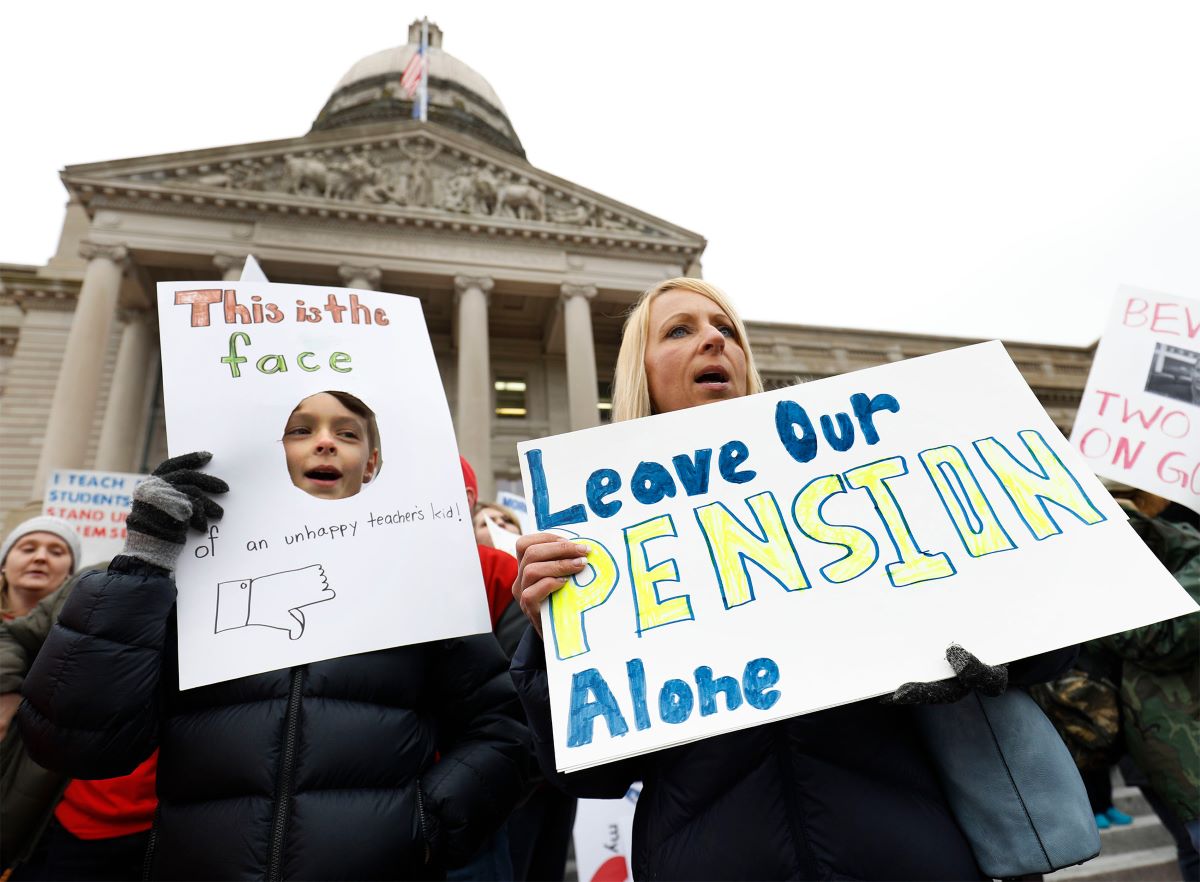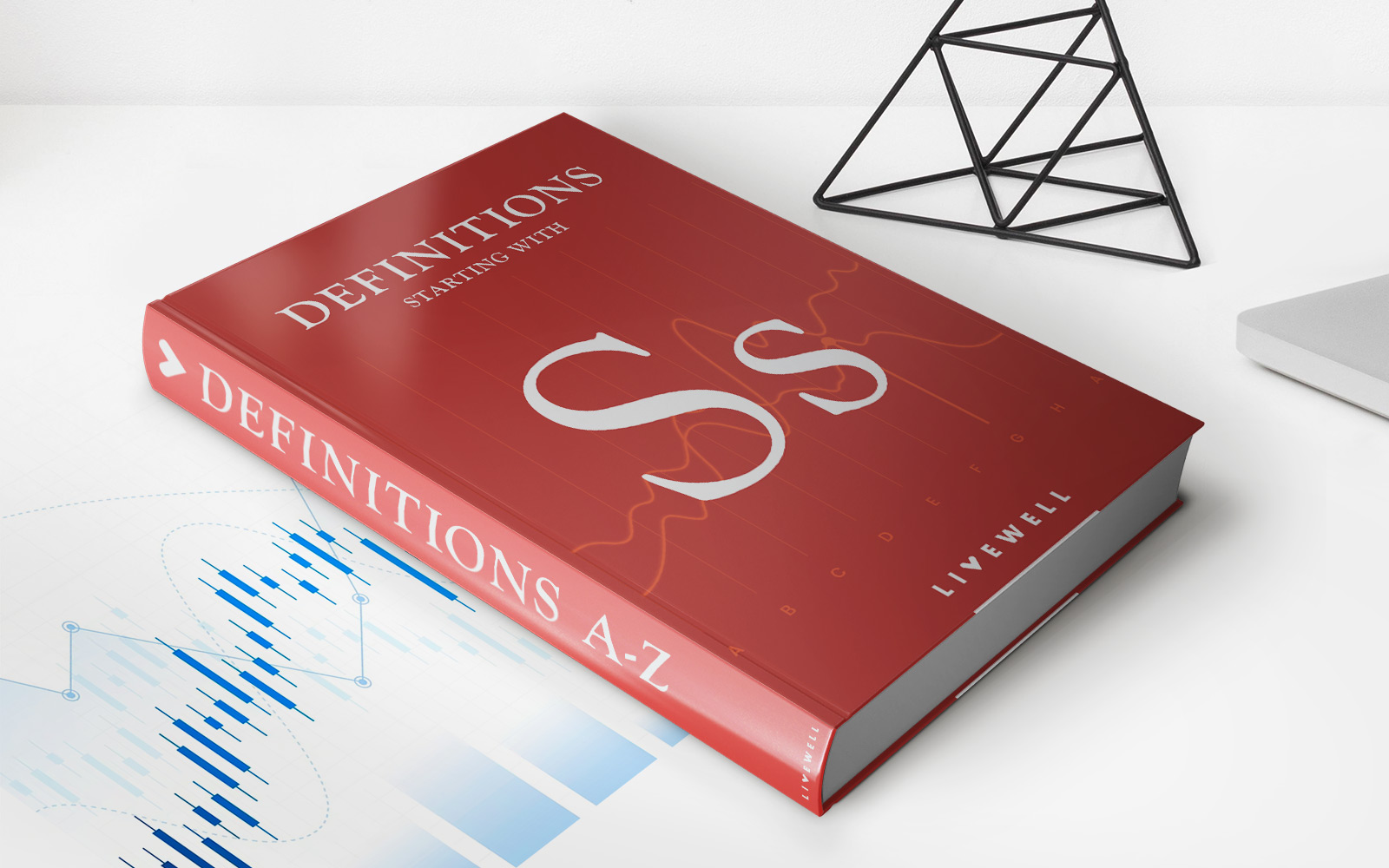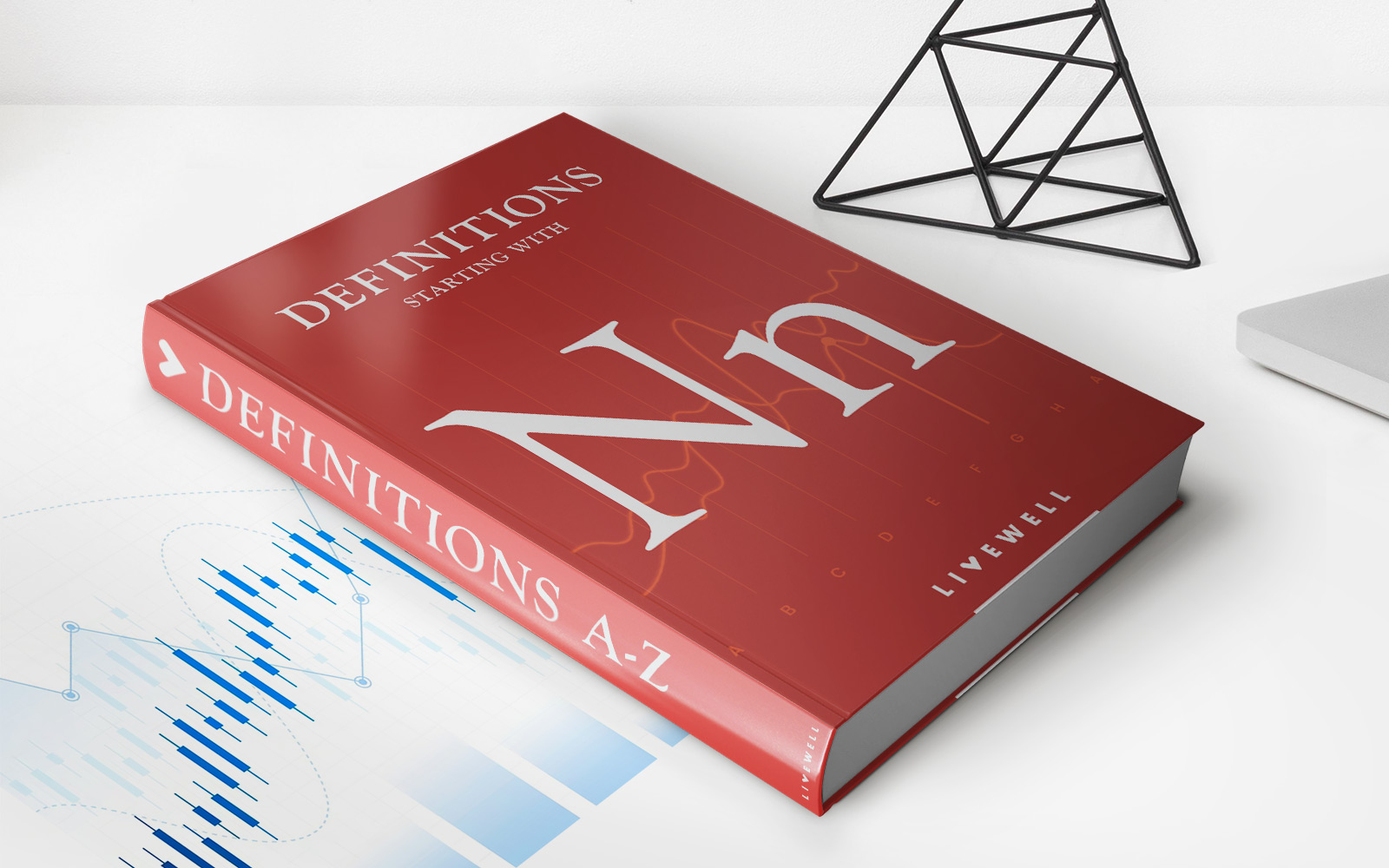Home>Finance>Why Are Pension Funds Involved In Corporate Bankruptcy?


Finance
Why Are Pension Funds Involved In Corporate Bankruptcy?
Published: January 23, 2024
Discover why pension funds are involved in corporate bankruptcy and the financial implications. Explore the intersection of finance and corporate insolvency.
(Many of the links in this article redirect to a specific reviewed product. Your purchase of these products through affiliate links helps to generate commission for LiveWell, at no extra cost. Learn more)
Table of Contents
- The Role of Pension Funds in Corporate Bankruptcy
- The Role of Pension Funds in Corporate Bankruptcy
- Impact of Corporate Bankruptcy on Pension Funds
- Legal and Regulatory Framework for Pension Fund Involvement in Corporate Bankruptcy
- Factors Influencing Pension Fund Involvement in Corporate Bankruptcy
- Case Studies of Pension Fund Involvement in Corporate Bankruptcy
- Conclusion
**
The Role of Pension Funds in Corporate Bankruptcy
**
Pension funds play a significant role in the realm of corporate bankruptcy, often finding themselves entangled in the complex web of financial distress. As entities responsible for managing and safeguarding retirement funds for employees, pension funds hold a substantial stake in the financial well-being of corporations. When a company faces the daunting prospect of bankruptcy, pension funds are not mere bystanders; rather, they become active participants in the ensuing proceedings, with their decisions and actions bearing far-reaching implications for both the company and its employees.
In the following sections, we will delve into the multifaceted involvement of pension funds in corporate bankruptcy, exploring their impact, the legal and regulatory framework governing their involvement, and the factors that influence their decisions in such critical junctures. Additionally, we will examine real-life case studies to glean insights into the practical manifestations of pension fund involvement in corporate bankruptcy. By the end of this discourse, we will have gained a comprehensive understanding of the intricate interplay between pension funds and corporate insolvency, shedding light on the complexities and implications inherent in this symbiotic relationship.
The Role of Pension Funds in Corporate Bankruptcy
Pension funds are pivotal players in the landscape of corporate bankruptcy, wielding substantial influence and bearing significant responsibilities. These funds, designed to secure the financial futures of employees post-retirement, often hold substantial stakes in the equity and debt of various corporations. As such, when a company faces the specter of insolvency, pension funds find themselves intricately enmeshed in the ensuing proceedings.
One of the primary roles of pension funds in corporate bankruptcy lies in their status as major creditors or shareholders of the distressed company. Their substantial holdings of corporate bonds, stocks, and other securities can tilt the scales of decision-making during bankruptcy proceedings. As active investors, pension funds often partake in crucial deliberations regarding the reorganization, liquidation, or acquisition of the bankrupt company, thereby exerting a tangible impact on the ultimate outcome.
Moreover, pension funds also serve as custodians of the retirement savings of employees, thereby assuming a fiduciary duty to act in the best interests of the beneficiaries. This fiduciary responsibility impels pension funds to engage in vigilant oversight of the bankruptcy process, ensuring that the rights and entitlements of employees are duly safeguarded amidst the financial tumult.
Furthermore, pension funds frequently engage in negotiations with debtors, creditors, and other stakeholders to chart out viable paths towards the company’s revival or orderly dissolution. Their active involvement in formulating and endorsing restructuring plans can significantly shape the trajectory of the bankruptcy proceedings, thereby underscoring their pivotal role in steering the company towards a sustainable future or an equitable resolution.
Ultimately, the multifaceted role of pension funds in corporate bankruptcy underscores their indispensability in the realm of financial distress. Their dual identity as major investors and custodians of employees’ retirement funds endows them with a weighty influence that permeates the intricate fabric of corporate insolvency, making their involvement a critical determinant of the bankruptcy’s outcome.
Impact of Corporate Bankruptcy on Pension Funds
Corporate bankruptcy casts a profound and far-reaching impact on pension funds, reverberating across the financial, regulatory, and social dimensions of their operations. The repercussions of a company’s insolvency on pension funds are multifaceted, encompassing financial losses, regulatory scrutiny, and implications for retirees and employees.
Financially, corporate bankruptcy can inflict substantial losses on pension funds, particularly if the distressed company’s securities form a significant portion of their investment portfolio. The erosion of asset value, potential defaults on corporate bonds, and diminished equity holdings can dent the financial health of pension funds, jeopardizing their ability to fulfill their obligations towards current and future retirees.
Regulatory scrutiny also intensifies in the wake of corporate bankruptcy, as pension funds come under heightened evaluation to ensure compliance with fiduciary responsibilities and regulatory mandates. The intricate web of regulations governing pension funds demands meticulous adherence, especially during tumultuous periods such as corporate insolvency, compelling funds to navigate stringent oversight and regulatory requisites.
Moreover, the impact of corporate bankruptcy on pension funds extends to the realm of employee welfare, as the retirement security of workers becomes a focal point of concern. The potential reduction or termination of pension benefits, the uncertainty surrounding pension fund solvency, and the ensuing anxiety among employees constitute critical social dimensions of the impact, underscoring the profound human implications of corporate insolvency.
Furthermore, the ramifications of corporate bankruptcy on pension funds permeate the broader financial ecosystem, with potential reverberations on investment strategies, risk management practices, and the overall stability of the pension industry. The need for recalibrating investment portfolios, reassessing risk exposure, and fortifying safeguards against future contingencies becomes imperative in the aftermath of corporate insolvency.
In essence, the impact of corporate bankruptcy on pension funds transcends mere financial losses, encompassing regulatory scrutiny, social implications, and systemic repercussions. Navigating these multifaceted challenges demands astute governance, prudent risk management, and unwavering commitment to safeguarding the retirement security of employees, thereby underscoring the profound and enduring impact of corporate insolvency on pension funds.
Legal and Regulatory Framework for Pension Fund Involvement in Corporate Bankruptcy
The involvement of pension funds in corporate bankruptcy is intricately governed by a robust legal and regulatory framework, delineating the rights, obligations, and limitations that shape their participation in the tumultuous terrain of insolvency proceedings. The intersection of pension fund governance and corporate bankruptcy is underpinned by a confluence of statutes, regulations, and judicial precedents, each bearing profound implications for the actions and decisions of pension funds during such critical junctures.
At the federal level, the Employee Retirement Income Security Act (ERISA) stands as a linchpin of the legal edifice governing pension funds, wielding significant influence over their involvement in corporate bankruptcy. ERISA imposes fiduciary duties upon pension fund managers, mandating the prudent management of assets and the unwavering commitment to safeguarding the interests of plan beneficiaries. This fiduciary framework engenders a heightened standard of care and diligence, shaping the decision-making calculus of pension funds during corporate insolvency.
Furthermore, the Bankruptcy Code, particularly under Chapter 11 reorganizations, furnishes a comprehensive framework that delineates the rights and prerogatives of various stakeholders, including pension funds, in the bankruptcy process. The code prescribes the contours of negotiations, restructuring plans, and the treatment of creditors, thereby charting the parameters within which pension funds operate as active participants in the reorganization or liquidation of the distressed company.
Additionally, judicial precedents and case law play a pivotal role in shaping the legal landscape governing pension fund involvement in corporate bankruptcy. Landmark court decisions have elucidated the fiduciary duties, rights of pension funds as creditors, and the overarching principles that underpin their engagement in bankruptcy proceedings, thereby serving as guiding beacons that inform and delineate the contours of their involvement.
Moreover, regulatory agencies such as the Pension Benefit Guaranty Corporation (PBGC) exercise oversight over pension funds, ensuring compliance with regulatory mandates and intervening in instances of distress or non-compliance. The PBGC’s role in safeguarding pension benefits and mitigating the fallout of corporate bankruptcy on pension funds underscores the regulatory dimension that permeates the legal framework governing their involvement in insolvency.
In essence, the legal and regulatory framework for pension fund involvement in corporate bankruptcy constitutes a complex tapestry of statutes, regulations, judicial precedents, and regulatory oversight. Navigating this intricate terrain demands a nuanced understanding of fiduciary duties, bankruptcy laws, and regulatory imperatives, thereby underscoring the profound significance of the legal and regulatory framework that governs the symbiotic interplay between pension funds and corporate insolvency.
Factors Influencing Pension Fund Involvement in Corporate Bankruptcy
The involvement of pension funds in corporate bankruptcy is influenced by a myriad of factors that shape their decisions, actions, and overarching stance during the tumultuous throes of insolvency proceedings. These factors, ranging from financial considerations to fiduciary responsibilities, regulatory imperatives, and social implications, collectively mold the contours of pension fund involvement in corporate bankruptcy, underscoring the complex interplay of multifaceted determinants that underpin their engagement.
Financial considerations stand as primary determinants that sway pension fund involvement in corporate bankruptcy. The magnitude of their exposure to the distressed company, the valuation of their holdings, and the potential financial ramifications of the company’s insolvency weigh heavily in their decision-making calculus. The financial health and solvency of the pension fund itself, contingent upon the performance of its investments, further accentuate the financial imperatives that govern their involvement.
Fiduciary responsibilities, mandated by statutes such as the Employee Retirement Income Security Act (ERISA), exert a profound influence on pension fund engagement in corporate bankruptcy. The fiduciary duty to act prudently and solely in the interests of plan beneficiaries serves as a lodestar that guides their decisions, compelling them to navigate the intricate terrain of corporate insolvency with unwavering commitment to safeguarding the retirement security of employees.
Regulatory imperatives, including the oversight of agencies such as the Pension Benefit Guaranty Corporation (PBGC) and the mandates of the Bankruptcy Code, also significantly shape pension fund involvement in corporate bankruptcy. Compliance with regulatory requisites, adherence to statutory obligations, and the imperative to navigate the intricacies of bankruptcy laws constitute pivotal factors that influence their engagement in the proceedings.
Social implications, encompassing the welfare of employees, retirees, and the broader community, also weigh in the calculus of pension fund involvement in corporate bankruptcy. The potential impact on pension benefits, the stability of retirement security, and the broader societal ramifications of their decisions underscore the profound social dimensions that permeate their engagement in such critical junctures.
Moreover, the strategic outlook of pension funds, their risk appetite, investment objectives, and long-term sustainability further influence their involvement in corporate bankruptcy. The alignment of their strategic vision with the imperatives of corporate reorganization or liquidation shapes their decisions, underscoring the strategic determinants that underpin their engagement.
In essence, the involvement of pension funds in corporate bankruptcy is influenced by a confluence of financial, fiduciary, regulatory, social, and strategic factors, each weaving a complex tapestry that shapes their decisions and actions during the tumultuous terrain of corporate insolvency. Navigating these multifaceted determinants demands astute governance, prudent risk management, and unwavering commitment to the fiduciary duties that underpin their pivotal role in such critical junctures.
Case Studies of Pension Fund Involvement in Corporate Bankruptcy
Several notable case studies offer illuminating insights into the intricate dynamics of pension fund involvement in corporate bankruptcy, showcasing the multifaceted implications, challenges, and outcomes that underscore their pivotal role in such critical junctures.
1. United Airlines
In the early 2000s, United Airlines, a prominent player in the aviation industry, grappled with financial distress, ultimately culminating in a high-profile bankruptcy filing. The involvement of pension funds, particularly the company’s employee pension plans, assumed center stage during the bankruptcy proceedings. The pension fund’s substantial stake in the company’s financial restructuring, the negotiations surrounding the treatment of pension obligations, and the implications for employees’ retirement security underscored the profound impact of pension fund involvement in the aviation giant’s insolvency.
2. General Motors
The bankruptcy of General Motors in 2009 stands as another seminal case that underscored the pivotal role of pension funds in corporate insolvency. The restructuring of the automotive behemoth, punctuated by the treatment of pension liabilities, negotiations with stakeholders, and the implications for retirees, showcased the intricate interplay between pension funds and the overarching trajectory of the company’s bankruptcy proceedings. The profound social and financial implications of pension fund involvement in this high-stakes bankruptcy underscored the complex dynamics at play.
3. Toys “R” Us
The bankruptcy of Toys “R” Us in 2017 presented a compelling case study of pension fund involvement in the retail sector’s financial turmoil. The treatment of pension obligations, the impact on employee retirement benefits, and the negotiations with creditors and stakeholders highlighted the pivotal role of pension funds in navigating the complexities of corporate bankruptcy. The implications for employees, retirees, and the broader retail landscape underscored the multifaceted dimensions of pension fund involvement in such critical junctures.
These case studies collectively underscore the profound and multifaceted implications of pension fund involvement in corporate bankruptcy, showcasing the intricate interplay of financial, regulatory, social, and strategic dimensions that permeate their engagement in such critical junctures. Navigating the complexities of corporate insolvency demands astute governance, unwavering commitment to fiduciary duties, and a nuanced understanding of the multifaceted determinants that underpin their pivotal role in shaping the trajectory and outcomes of bankruptcy proceedings.
Conclusion
The involvement of pension funds in corporate bankruptcy engenders a complex and multifaceted interplay of financial, regulatory, social, and strategic dimensions, underscoring their pivotal role in shaping the trajectory and outcomes of such critical junctures. As custodians of employees’ retirement savings and substantial investors in corporate securities, pension funds assume a weighty influence that permeates the intricate fabric of insolvency proceedings, with far-reaching implications for employees, retirees, and the broader financial ecosystem.
The multifaceted role of pension funds in corporate bankruptcy underscores their indispensability in navigating the complexities of financial distress, thereby underscoring the imperative for astute governance, unwavering commitment to fiduciary duties, and a nuanced understanding of the multifaceted determinants that underpin their pivotal role in such critical junctures. Navigating the intricate terrain of corporate insolvency demands meticulous adherence to regulatory imperatives, prudent risk management, and an unwavering commitment to safeguarding the retirement security of employees, thereby underscoring the profound and enduring impact of corporate insolvency on pension funds.
As we have traversed the intricate landscape of pension fund involvement in corporate bankruptcy, we have gleaned insights into the multifaceted implications, challenges, and outcomes that underscore their pivotal role in such critical junctures. The case studies of United Airlines, General Motors, and Toys “R” Us have offered illuminating perspectives into the profound impact of pension fund involvement in corporate insolvency, showcasing the complex dynamics at play and the enduring implications for employees, retirees, and the broader financial ecosystem.
In essence, the involvement of pension funds in corporate bankruptcy constitutes a complex and multifaceted terrain that demands astute governance, unwavering commitment to fiduciary duties, and a nuanced understanding of the multifaceted determinants that underpin their pivotal role in shaping the trajectory and outcomes of such critical junctures. Navigating the complexities of corporate insolvency demands a steadfast dedication to safeguarding the retirement security of employees, thereby underscoring the profound and enduring impact of corporate insolvency on pension funds.














